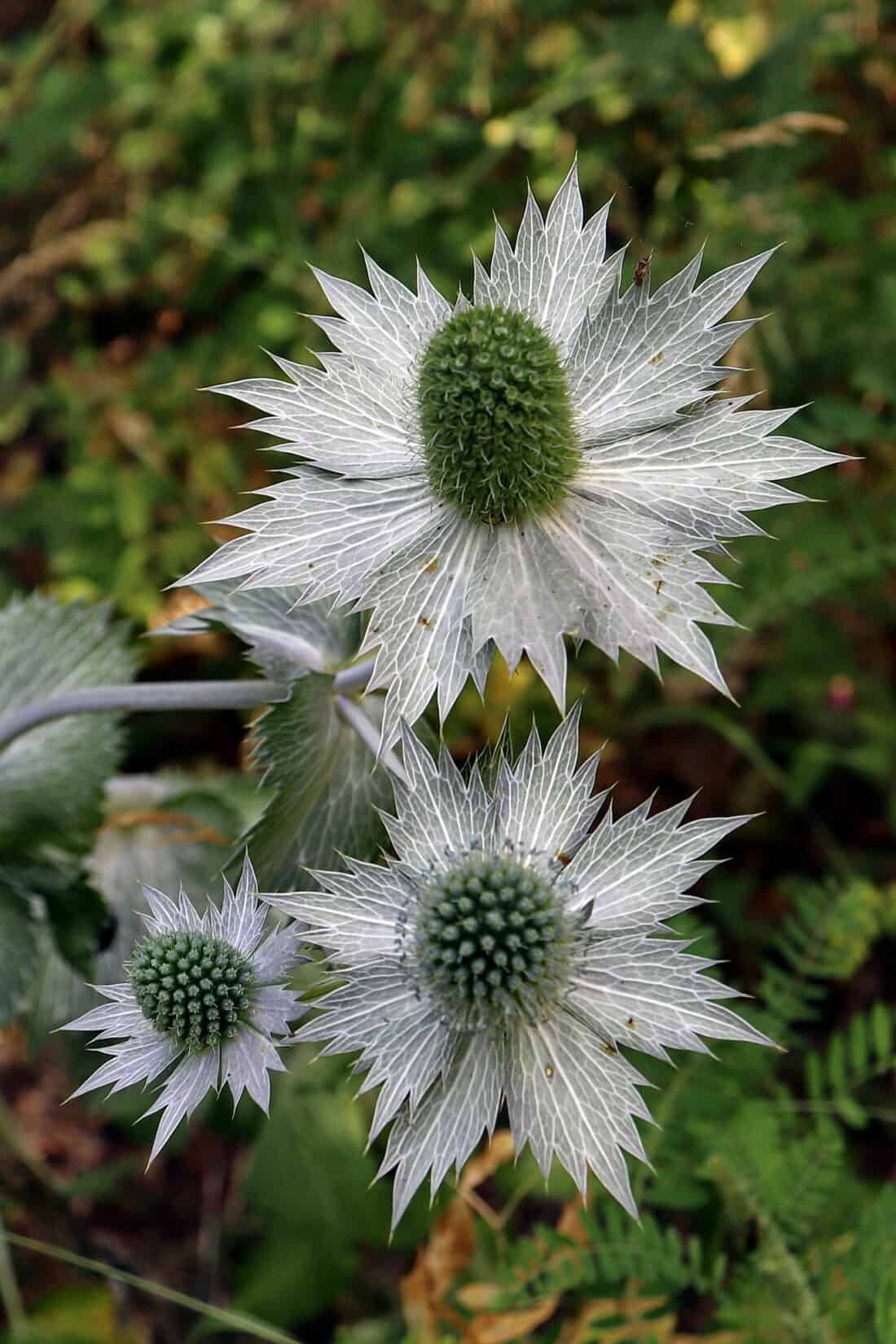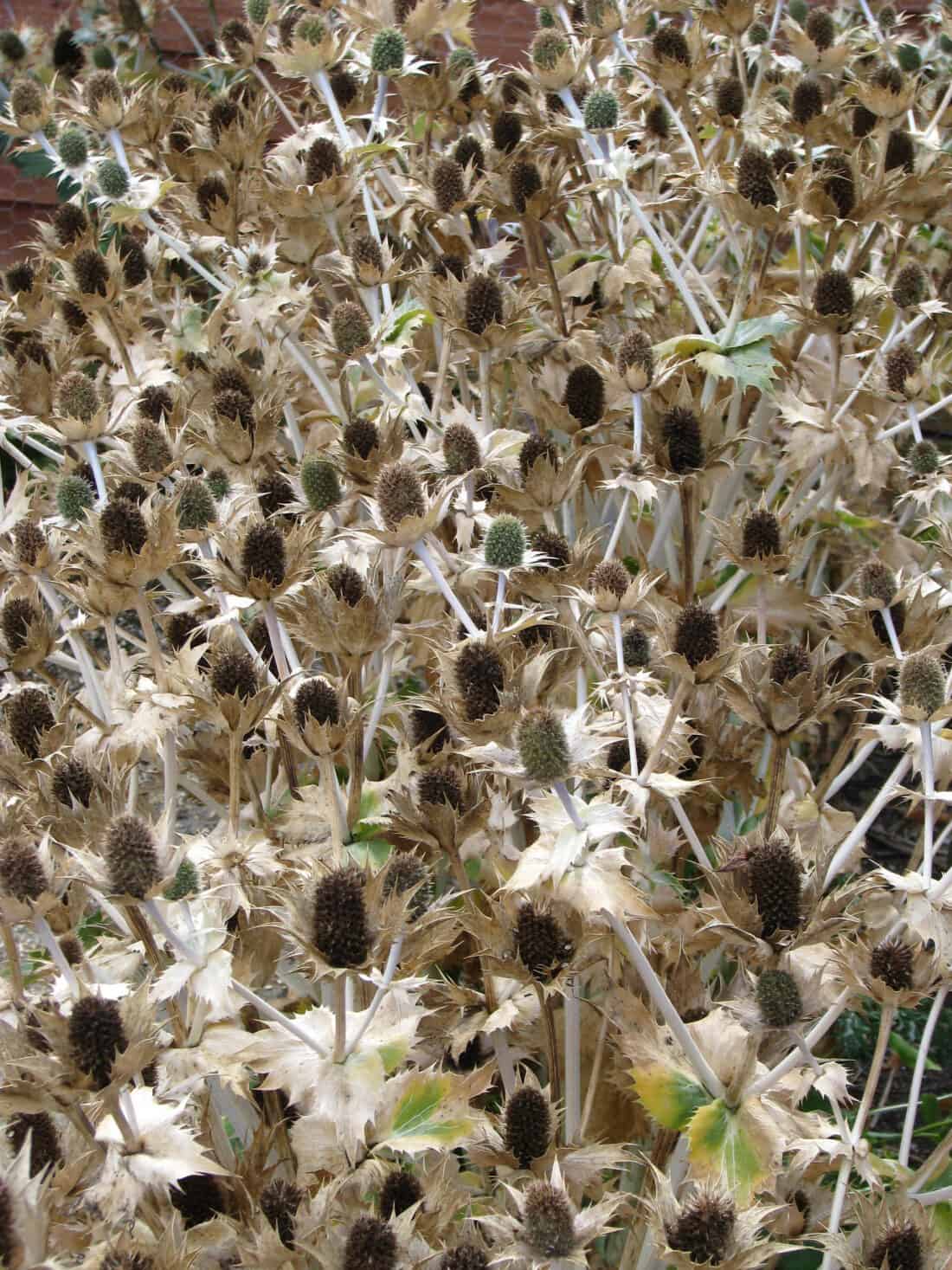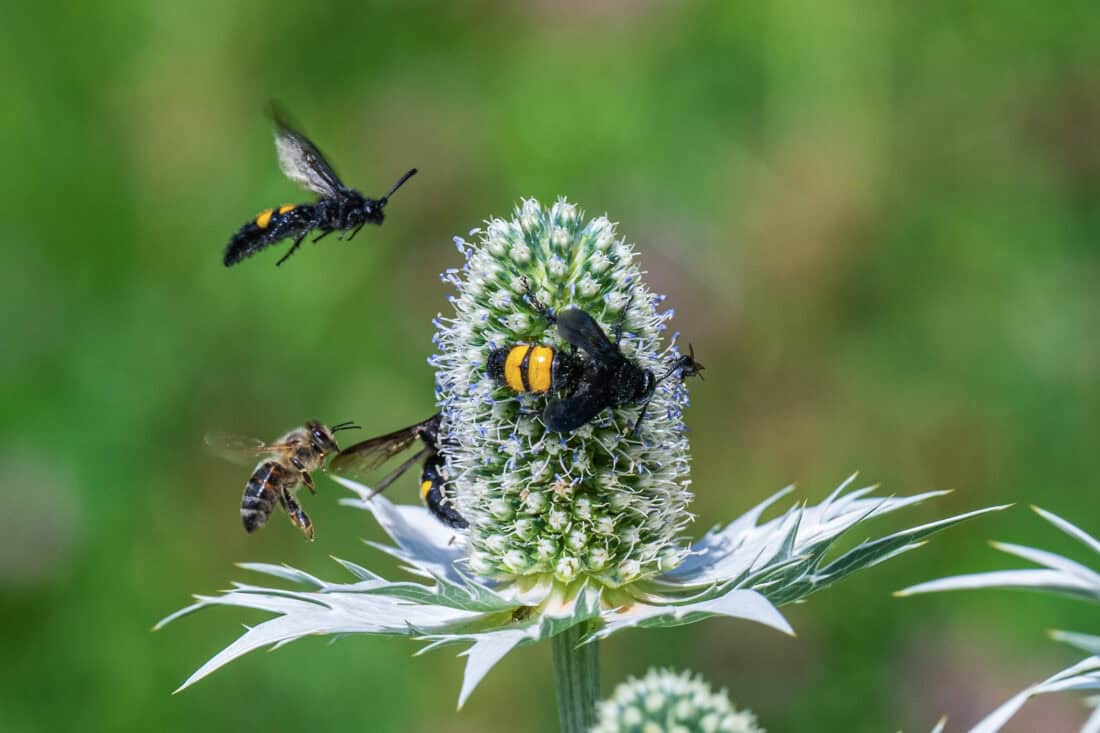Who was Ellen Willmott (and why would I ask such a thing on a garden and plant website?)? Well, She was an heiress who blew through her fortune on gardens and plants – that’s why. And because she was so loaded (uh, I mean a patron) – lots of plants were named after her.

Who is Ellen Willmott?
Hailing from the UK, Ellen Willmott spent vast sums of money building gardens in Europe, employing staff to maintain them and buying the plants to fill the garden beds. Several sources report she had approximately 100,000 different types of plants in her garden.
Her inheritance also funded numerous plant exploration trips in the late 1800’s and early 1900’s. From these trips, newly introduced plants were named with willmottiae or warleyensis in honor of her name and her garden, Warley.

Willmott was eccentric (but aren’t we all?) and obsessed with the art of gardening. Another source reported that she would fire gardeners if they missed a weed in the mixed border. (!!) Unfortunately, near the end of her life, she had to sell off most of her property and possessions to pay off her debts. Her garden and home at Warley were eventually razed, and the area is now a nature preserve. (Warley has fallen into disrepair since WW2 but is still an noteworthy landscape to visit in England)

The Legend of Ellen Willmott’s ghost – Eryngium giganteum
Miss Willmott’s legend, however, lives on in the plants named in her honor. The most notabe is Eryngium giganteum.
This species of sea holly is silver blue, reaching heights of nearly 3 feet when in flower. Eryngium giganteum is a short-lived perennial, usually dying after flowering. It is a self-seeder in the plant bed so it will come back from seed even after it dies.
Ellen Willmott so loved the giant sea holly that she typically carried seed around with her wherever she traveled. Miss Willmott felt that a garden could always use a giant sea holly, so she would freely toss out seeds in others’ gardens. The seeds would germinate and turn into plants, earning the common name of Miss Willmott’s Ghost.
Can you imagine inviting a horticultural celebrity over to your home only to find out later that they threw out seeds of a spiny, silvery plant in your garden? That is precisely what she did, and people began to associate the presence of an Eryngium giganteum with a visit from Ellen Willmott.
Miss Willmott’s ghost appears to be more popular in the United Kingdom than here in the United States.

I am working on a garden design for a naturalistic border here in Maine where I would like to contrast the fine texture of Heavy Metal panicum with the bold, spiky foliage of Miss Willmott’s ghost. I have never grown this Eryngium before so it will be fun to see how this combination works out later this summer. Have you grown any of the Eryngium species before? If so, have you tried E. giganteum? Or perhaps you have seen and grown Eryngium giganteum ‘silver ghost’ (a close relation)…
–Rodney
Awesome plant story! I love it!
Thanks, Rochelle!
I have two seedlings of this plant, growing for the first time. The story and photos are great! Thanks!
Debbie, let us know how your plants fare.
Good old legend but not true. Ellen Wilmott did not throw seeds into Sizzinghurst castlee White garden nor another place . She did however treasure this giant plant a surprise in her borders .It was a Fleet Street new paper that said she spread seed as fact. She had far better things to do . She did carry a gun and knife in her handbag . She had spent freely on her gardens and ended up broke. The car had been sold and staff released .Her walk through wild woods from the train had her arming up to protect herself on foot